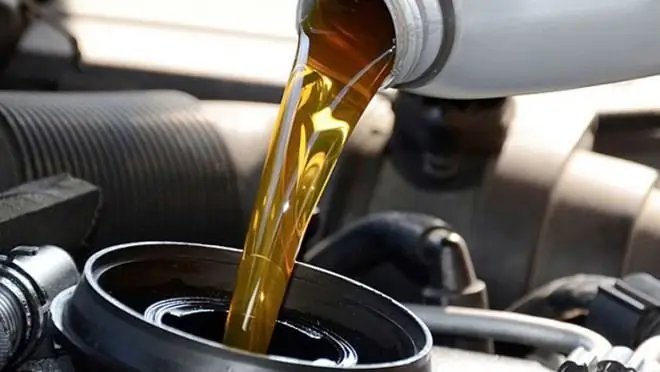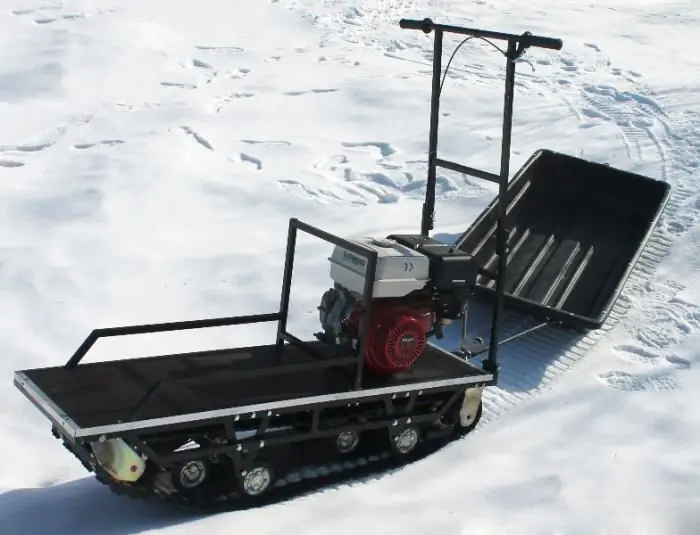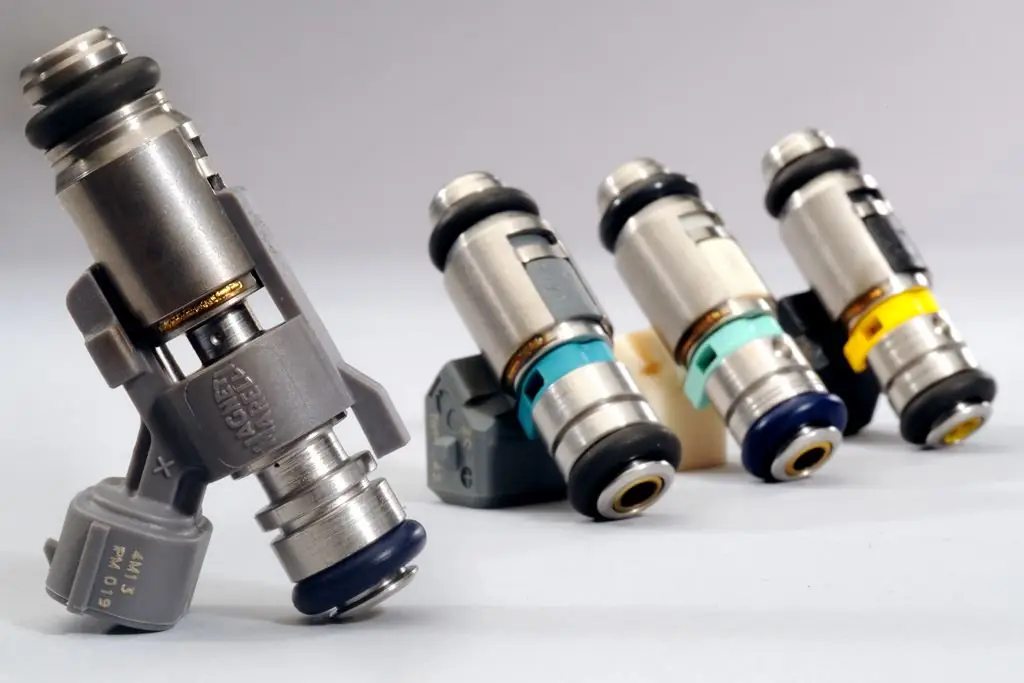2025 Author: Erin Ralphs | [email protected]. Last modified: 2025-01-22 21:14:11
With rusted bolts or nuts, which sometimes simply cannot be unscrewed without breaking it, all motorists who prefer to repair and service their car have probably encountered. And if earlier craftsmen used folk remedies to solve this problem, wetting them with brake fluid, kerosene or turpentine, now penetrating lubricant has come to their aid.

Reason for the popularity of penetrating lubricants
First appeared on the market, this tool very quickly gained recognition, not only among motorists, but also just in everyday life. Why this happened is due to several reasons, first of all, of course, ease of use. After all, the penetrating lubricant itself is placed in a spray can, and it is convenient to use it, processing the desired part, without getting your hands dirty. For hard-to-reach places, a tube is specially provided, which is put on the nozzle of the can. With its help, hidden elements of nodes and mechanisms are processed, for example, door locks.
Another reason is its versatility: preemptingmoisture, softening and removing rust, creating an anti-corrosion protective film on the treated surface.
Penetrating Lubricant WD-40
Perhaps the most famous representative of such sprays is the universal penetrating lubricant WD-40 or “Vedeshka”, as it was called by the people. It was developed more than half a century ago in the United States, but continues to be at the peak of popularity, however, due to successful marketing rather than its characteristics. So what is the legendary Vedashka?

Composition WD-40
Officially, the manufacturer continues to keep the composition of the liquid a secret, although in fact this secret has long been revealed: a mixture of white spirit (petroleum solvent) and paraffin distillate. Moreover, from the moment of its creation and up to the present day, this lubricant has not undergone practically any changes, except for the addition of flavors to its composition, and from time to time changing packaging.
For the sake of fairness, it should be noted that the penetrating lubricant "WD-40" is primarily a water displacer, as evidenced by its name: WD - Water Displacement. But the manufacturer also attributes to it anti-corrosion and protective properties. Nevertheless, you should not flatter yourself about this.
Disadvantages and advantages of "Vedashki"
The main problem of "vedeshki" is that the petroleum distillates that make up it really form a protective film on the treated surface, but it is so thin that it evaporates very quickly. ATtherefore, corrosion protection is short-term, and the lubricating properties of WD-40, which is positioned by sellers as a penetrating lubricant, are virtually absent.

Besides this, the practical experience of using the “weed” has revealed another unpleasant moment: after removing moisture, it contributes to its rapid adsorption from the surrounding air, which again leads to the formation and development of corrosion. And also do not forget that while processing is in progress, the remnants of the lubricant that was in it earlier are also washed out. Therefore, after using this fluid, the mechanism must be lubricated with oil.
But, one way or another, the "weed" really penetrates well even into complex mechanisms, while freeing rusted parts. In addition, WD-40 is great at cleaning a wide variety of stains, including black shoe marks and hard-to-remove marker, as well as grease, adhesive residue and tar stains.
Possible alternative to WD-40
Of course, Vedashka, despite its shortcomings, is able to help out in a difficult situation, but this is not the only penetrating lubricant on the market.
"Unisma-1" is a product developed by domestic chemists back in the Soviet period as a counterbalance to WD-40. Moreover, in some properties, it is not only not inferior to the famous competitor, but also surpasses it. However, Unisma-1 also inherited the shortcomings inherent in American grease. Therefore, both liquids can hardly be called multifunctional, and their use is mainly reduced to facilitating the dismantling of damagedrust parts.
But Molykote Multigliss, a universal penetrating lubricant, can be said to fully comply with this definition. In it, the manufacturer tried to get rid of the shortcomings inherent in the above lubricants.
In addition to high penetrating power and fast softening of rust, this liquid displaces moisture and at the same time does not allow it to be adsorbed on the surface. And thanks to the fact that inhibitors were introduced into its composition, Molykote Multigliss continues to protect the part from corrosion after application.
The lubricating film formed on the surface effectively reduces the wear caused by friction, while it is quite durable and retains its properties for a long time.

Thus, the manufacturer, Dow Corning, really managed to create a multifunctional product.
Another product that is also considered quite effective, and, importantly, relatively inexpensive, is called EFELE UNI-M Spray.
The peculiarity of this product is that, penetrating into the assembly, it does not flow out, forming not just a film, but a whole lubricating layer that can withstand various loads and prevent corrosion.
Enhanced anti-wear properties of UNI-M Spray provide the addition of anti-friction fillers to its composition. And inhibitors protect against rust.
What to choose?
It is difficult to give an unambiguous answer to this question. In addition, the penetrating liquids discussed above -this is just a small sample of what you can buy in the store today. In fact, their selection is huge. One thing is clear, there are substitutes for such a popular WD-40 that work much better than this fluid.

In the end, if you only need to unscrew a rusty bolt, you can do without special mixtures, but try to do it with the help of folk remedies: vinegar essence or Coca-Cola, which contains orthophosphoric acid. Both of them do an excellent job with corrosion. By the way, it is phosphoric acid that manufacturers use in the manufacture of many rust converters that are used to treat car bodies.
In general, before going to the store for a “liquid key”, as penetrating lubricants are also called by the people, you should decide whether it is really needed to perform the work that is planned to be done or you can get by with what is under hand.
Recommended:
What is the difference between front-wheel drive and rear-wheel drive: the difference, advantages and disadvantages of each

Among car owners, even today, disputes about what is better and how front-wheel drive differs from rear-wheel drive do not subside. Each gives his own arguments, but does not recognize the evidence of other motorists. And in fact, it is not easy to determine the best type of drive among the two options available
Automotive oils 5W30: rating, characteristics, classification, declared qualities, advantages and disadvantages, reviews of specialists and car owners

Every car owner knows how important it is to choose the right engine oil. Not only the stable operation of the iron “heart” of the car depends on this, but also the resource of its operation. High-quality oil protects mechanisms from various adverse effects. One of the most popular types of lubricants in our country is oil with a viscosity index of 5W30. It can be called universal. The 5W30 oil rating will be discussed in the article
Left hand drive: advantages and disadvantages. Right-hand and left-hand traffic

The left hand drive car is a classic arrangement. In many cases, it is more profitable than the opposite counterpart. Especially in countries with right-hand traffic
The best motorized towing vehicle: owner reviews and specifications. Advantages and disadvantages of different motorized towing vehicles

A motorized towing vehicle is a compact vehicle that is popular with hunters and fishermen around the world
Carburetor and injector: difference, similarities, advantages and disadvantages of carburetor and injection engines, principle of operation and expert reviews

For more than a hundred years, the car has firmly established itself in our lives. During this time, managed to become a familiar, everyday means of transportation. Let's see what the difference is between a carburetor and an injector, what advantages and disadvantages they have

